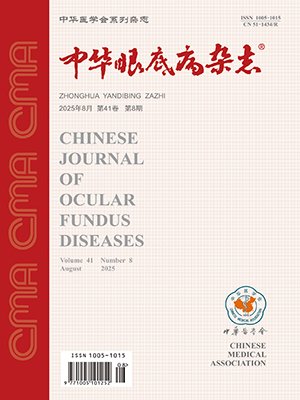Objective:To observe the inhibited effect and its mechani sm of estro gen on lightinduced apoptosis of retinal photoreceptor cells. Methods:Twenty female Sprague-Dawley rats were randomly divided into two groups: ovariectomized (OV) group and OV and estrogen (E2) replacement (OV+E2) group, with 10 rats in each group. All of the rats were exposed to the cyclic illumination under 12 hou r light and 12 hour dark condition with the light intensity of (600 plusmn;35.4) lx ( a total of 14 times). All of the right eyes were extracted and the thickness of r etinal outer nuclear layer (ONL) was measured. Terminal deoxynucleotidyl Transfe rasemediated dUTP nick end labeling (TUNEL) method was used to evaluate positi v e apoptosis cells in ONL. The expression of nitric oxide synthase (NOS) in retin al cells was detected by immunohistochemistry with image analysis method. Results:The thickness of ONL in OV group was obviously thinner than that in the OV+ E2 group. The number of positive apoptosis of the cells was (0.0275 plusmn;0.0069) c el ls/ mu;m2 in OV group and (0.0162 plusmn;0.0054) cells/ mu;m2 in OV+E2group; the di fferen ce between the two groups was significant (t=4.1370,P=0.0012). The values o f in tegral optical density of NOS positively stained cells in retinal inner nuclear layer was (0.3675 plusmn;0.0662) in the OV group and (0.2941 plusmn;0.0350) in OV+E2 group ; the difference between the two groups was significant (t=3.4885, P=0.0031). Conclusion:Estrogen can protect retina from light injuries by regu lating NOS synthesis and inhibiting apoptosis of photoreceptor cells.
Citation: CHEN Xiaohu,ZHANG Junjun,DAI Yan. Protective effects of estrogen on retina from the light injury. Chinese Journal of Ocular Fundus Diseases, 2007, 23(5): 324-326. doi: Copy
Copyright © the editorial department of Chinese Journal of Ocular Fundus Diseases of West China Medical Publisher. All rights reserved




